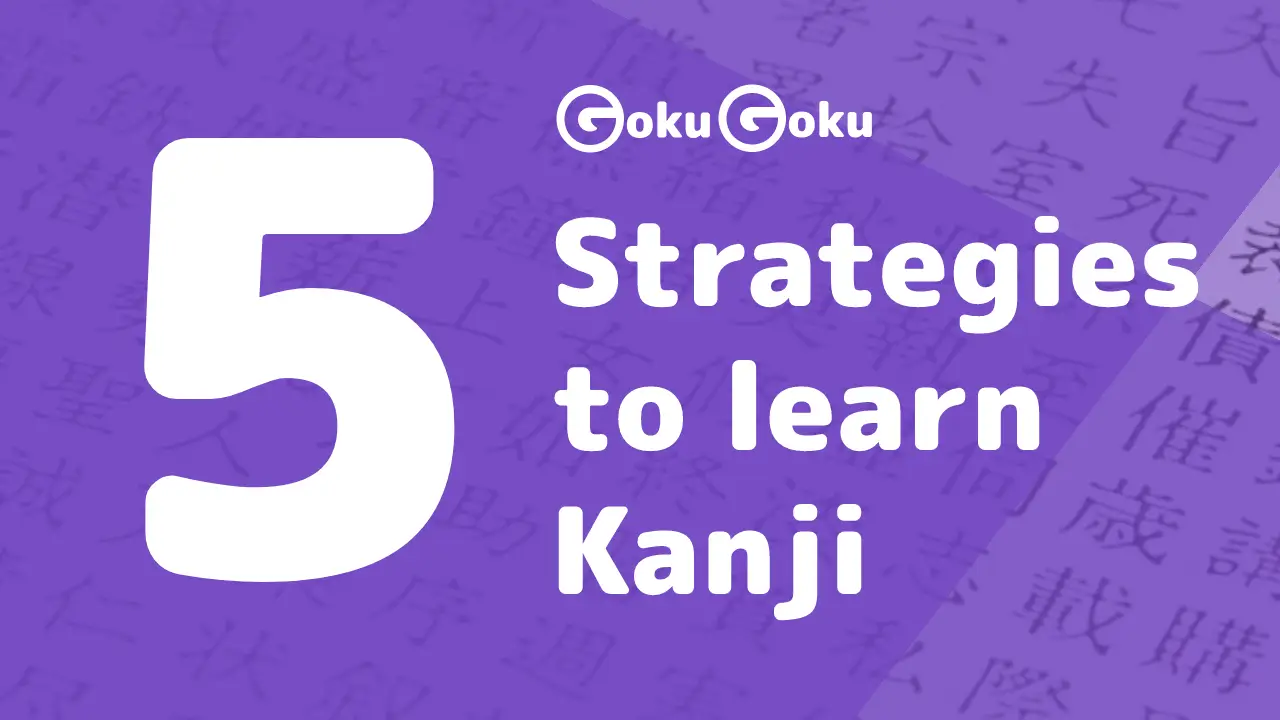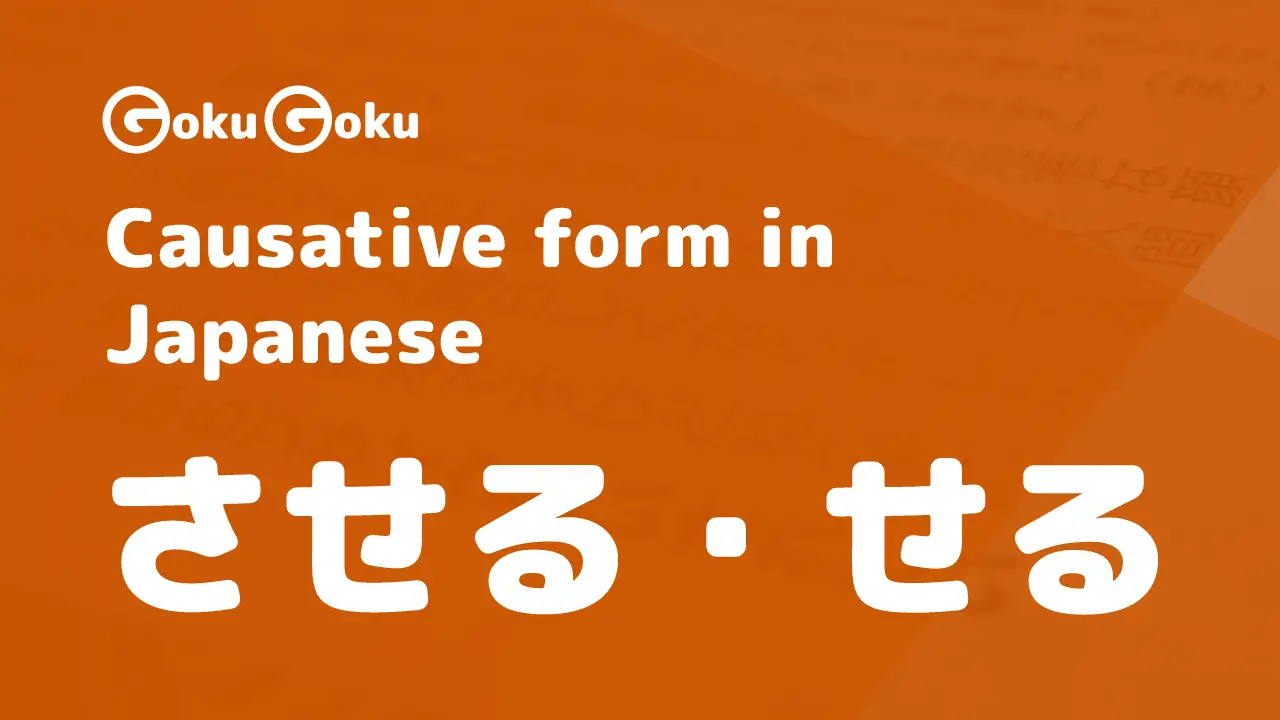Here we are at the second part of our series on Japanese numbers.
As we anticipated in the first part dedicated to the numbering system, numbers always appear together with an element that is called in various ways: Counter, Classifier, Numeric suffix.
This aspect of the Japanese language is often a source of perplexity for many foreigners who approach the study.
In many Western languages there is no difference in counting one object over another.
We can simply say 3 eggs, 3 books or 3 times, without the need to attach to the number some element that refers to (for example):
- a small object (egg)
- a printed material (books)
- how often we do an action (times)
It is at the same time an interesting aspect of the language and we don't need to learn the number suffixes all together. Always remember to ...:
ステップバイステップで学習を進める
... learn things step by step
Numeric suffixes for dates - 年, 月, 日
We already found numeric-suffixes earlier, in the transcript of dates:
2022年3月21日
March 21, 2022
Remember that the order for the date transcribed in Japanese is: year / month / day. We should also keep in mind that Arabic numerals are used in most cases.
How numeric suffixes work
Let's see an example to understand how to use numeric suffixes in a sentence:
In this case the object to be counted is of the book category, so we use the suffix 冊:
- The first element is 本
book - The noun is followed by the particle を which indicates the object
- Then follows the number 二 (
2) + the counter 冊 - Finally the verb 下さい, which is the verb
givein its polite form (give me please)
Let's also see how to read the various combinations of number and numeric suffix:
- 一冊 reads いっさつ
- 八冊 reads はっさつ
- 十冊 reads じっさつ or じゅっさつ
Asking "how much" with numeric suffixes
The question to ask how much? / how many? is formed by prefixing 何 to the numeric suffix.
あなたは本を何冊読んでいる?
How many books do you read?
---
In the interrogative sentence with numerical suffixes, the order of the elements also changes. The sentence quoted above can also be expressed as:
あなたは何冊の本を読んでいる?
How many books do you read?
何冊 is made up of:
- Interrogative 何 (
what,which,how much) - Numeric suffix 冊
These two terms precede the noun with the particle の.
What happens when I only use numbers without numeric suffixes?
Generally, if we interact directly with a Japanese person, we understand the meaning of what we are asking even without the use of the numeric suffix.
Whoever has been in Japan can confirm this: Japanese people, even in cases of communication difficulties, always does their best to understand what we are trying to say and ask
Speaking of expenses, if you go to 八百屋 (greengrocer) and say:
リンゴを一下さい。
An apple please.
In this case, use only the number 一. You will probably then be asked:
一個ですか一キロですか。
Do you want a single apple or a kilo?
Generally, as we said, we communicate using only numbers in a colloquial context. However, keep in mind that the sentence is not correct and complete in grammar.
Flat Objects - 枚数
---
The kanji 枚 is used to count flat, thin objects such as sheets, handkerchiefs, shirts, plates, music CDs.
切手を5枚とはがきを2枚買ってきました。
I bought 5 stamps and 2 postcards.
Counters and E-commerce
One of the useful way to learn counters is to visit sites of E-commerce, looking for different items and goods and checking their counters. Here are some examples taken from the sites of Amazon Japan and Rakuten.
枚 mai
Mai is perhaps one of the most common counters and it's mainly used to count flat objects as gloves in our case.
- 100枚入り containing 100 pieces, pack of 100 pieces

玉 tama
Tama means ball, bead; it's used to count round things, such as tomatoes, peaches, heads of lettuce, cabbage.
- レタス2玉: 2 heads of lettuce
- うどん3玉 3 portions of udon In the picture : a box containing 22 / 24 apples

脚 kyaku
Kyaku means skids, leg, base and it is used to count tools with legs, such as desks and chairs
- 2脚セット, a set pair of chairs

点 ten
Ten means dot or point and it's used to count any kind of artwork including paintings, sculptures and many products such as accessories, curtains, furniture, vases, pottery, cloth.
- In the picture as we can read: a set (セット) of 2 photo frames (フォトフレーム)

巻 kan
Kan means scroll, volume, book and as counter is used to count volumes of a series of books, videotapes, cassette tapes, DVDs etc
- in the picture you can deduce: series of manga, volumes (巻) 1 - 104
- 全巻セット the whole volume, the complete set

Small Objects - 個数
---
The kanji 個 is used to count small objects such as an apple, an egg, a cup.
As we have seen previously, in reading some numbers we have some sounds that are contracted, usually the number 1, 6, 8 and 10, but it depends on the numeric suffix:
- 一個 reads いっこ
- 六個 reads ろっこ
- 八個 reads はっこ
- 十個 reads じっこ or じゅっこ
卵は1日何個まで食べていいですか。
(How many|3) eggs can I eat each day ?
The literal translation of the quoted sentence would be Each day, up to how many eggs (何個まで) can I eat?.
Recall that the form in て + いいですか is used when asking for permission to do something.
Objects with an elongated and narrow shape - 本数
---
The kanji 本 is used to count objects with an elongated and narrow shape such as pencils, pens, umbrellas.
It is also used for audio and video material such as audio cassettes, video cassettes, DVDs, some musical instruments.
- 一本 reads いっぽん
- 三本 reads さんぼん
- 六本 reads ろっぽん
- 八本 reads はっぽん
- 十本 reads じっぽん or じゅっぽん
ギターを2本買ってきました。
I bought two guitars .
本 to count and indicate the number of Videos

From the YouTube channel of the Japanese public broadcaster NHK:
2618本の動画
2618 videos
Printed material - 冊数
---
The kanji 冊 is used to count printed material, such as books, notebooks, dictionaries, tomes, brochures, handouts.
- 一冊 reads いっさつ
- 八冊 reads はっさつ
- 十冊 reads じっさつ or じゅっさつ
Email and Text Messages - 件数
---
件 is used to count the number of messages or emails received. You often find this kanji if you use the Japanese language on your smartphone or pc.

Means of locomotion - 台数
---
The kanji 台 is used for means of locomotion (cars, bicycles, motorcycles).
台 is also used for household appliances (televisions, telephones).
Counting people - 人数
---
With the suffix 人 in this case we don't count objects, but human beings, people.
- 学生が一人
a student: the reading is ひとり - 先生が二人
two teachers: the reading is ふたり - 友達が三人
three friends: the reading is さんにん
From number 3 onwards to read we apply the following rule: reading of Chinese origin of the number + suffix 人
会社に男の社員が4人います。
There are 4 male colleagues in the office.
Number of times - 回数
---
To express the number of times an action is performed we use the 回 counter.
- 一回 reads いっかい
- 六回 reads ろっかい
- 八回 reads はっかい
- 十回 reads じっかい or じゅっかい
週に一回日本語のレッスンを受けています。
I have a Japanese lesson once a week.
Age - 年齢
---
The age 年齢 of the person is expressed by the suffix 歳 also in the variant in use 才.
---
If we want to ask the age in a polite way we can use the phrase:
おいくつですか。
How old are you?
いくつ is a question that translates to "how much?" / "how many?"
35才です。
I'm 35.
- 一才 reads いっさい
- 八才 reads はっさい
- 十才 reads じっさい or じゅっさい
Price - 金額
---
To express the price, cost 金額 of an object instead, we use the term relating to the currency of the reference country.
- 円 Japanese yen
- ユーロ euro
- ドル US dollar
- ポンド British pound
- ルピー Indian rupee
- ウォン Korean won
- 元 Chinese yuan
すみません、このバッグはおいくらですか。58ユーロになります。
Sorry how much does it costs this purse ? It's 58 euro .
Numeric suffixes and Japanese cuisine; ingredients to make Japanese fried rice: audio and vocabulary
「パラパラチャーハン」means “non sticky fried rice"
0:00.00
-1:0-1.00
- パラパラ卵チャーハン: Japanese Fried rice
- 材料はこちら: Here are the ingredients
- 1人前: for one person
- ご飯、150ぐラム, Rice: 150 gr
- 卵、2個: 2 Eggs
- 塩、3つまみ: 3 pinches of Salt
- 胡椒、少々: Pepper: a little bit
- お酒、小さじ2: Sake 2 teaspoons
- サラダ油、小さじ2, Salad oil: 2 teaspoons チャーハン Chāhan, from Chinese language, fried rice called chǎofàn (炒飯); the Japanese term is 焼飯 yakimeshi
つ Series or Japanese Series
We had already mentioned kun reading, the Japanese kanji reading of numbers. We can call it Japanese series or つ series, as all numbers end with this kana.
This numerical series is used when you want to count an object that has no particular category to which it belongs.
ハンバーガーを7つ
Seven burgers
すみません。サンドイッチをいつつください。
Excuse me, five sandwiches please.
Examples of use of numeric suffixes
りんご5キロは何個?
How many apples are there in 5 kilos?
約14~18個。
It's about 14 to 18 apples.
約 before the number translates "approximately, around ..."
人乗りの車
A 7 seats vehicle
日本人の平均年間読書本数は12,13冊。
The average number of books read annually by the Japanese is 12-13 books.
A numeric suffix from Internet:

A comment on a YouTube Video, where we find the numeric suffix or counter 件 for E-mails, text messages, voicemail messages and in this case also replies to various comments on the net.
- 1件の返信: 1 reply
That's all for today. We have seen how numeric suffixes in Japanese work. We then saw several examples of suffixes and when they are used.
If this content interests you, you can subscribe to our newsletter below 👇
See you soon!







